#germicidal uv light
Explore tagged Tumblr posts
Text
bunch of bag holders- i mean "bored apes" held an exclusive event in hong kong this past week and bc the organizers used the wrong type of UV lamps a bunch of them have serious eye and skin damage
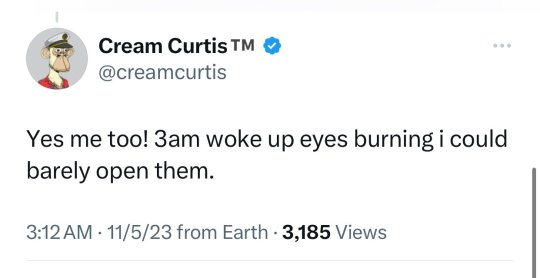

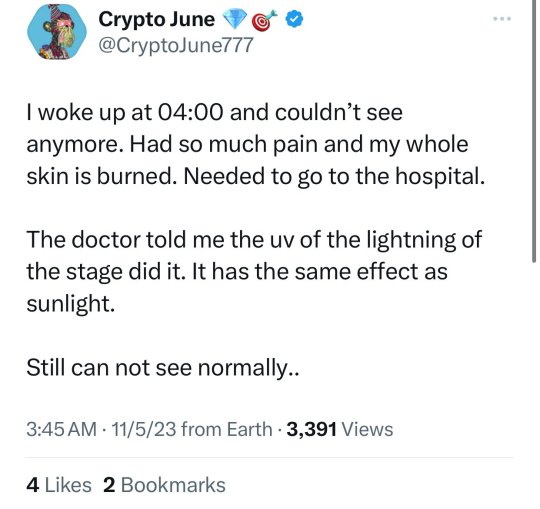

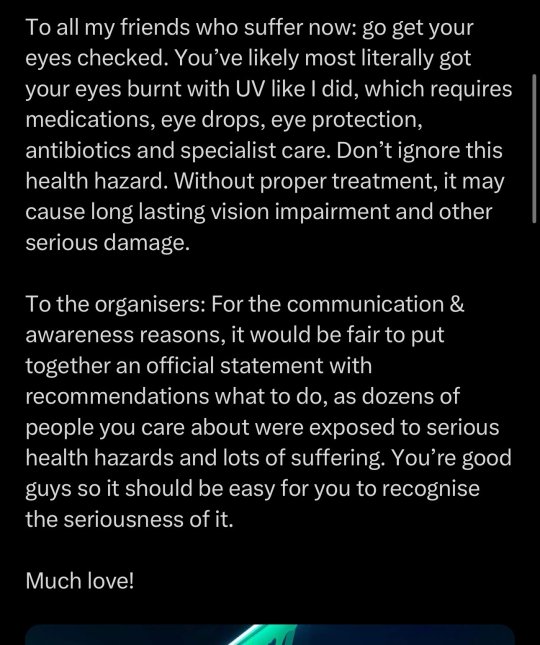
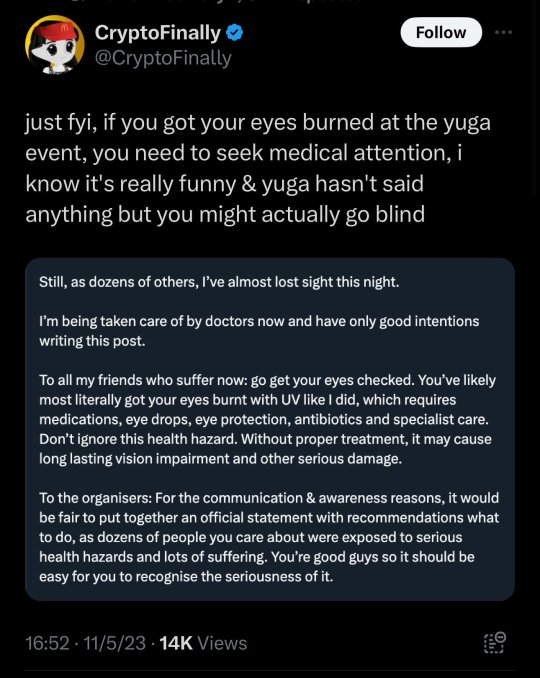
#lol. lmao even#specifically the lamps used emitted uv c light#which is the light frequency used in germicidal lamps#imagine paying thousands of dollars fo attend this only to walk away w welder's eye and sunburn so bad you get welts
14 notes
·
View notes
Text
Efficient and Portable This UV germicidal lamp combines UV-C light and ozone to provide powerful sterilization, with a 360° beam angle for maximum coverage. The device is compact and portable, making it ideal for use in a variety of settings, including your home or while working outdoors. It also includes a timer function for automatic operation, so you can set it and let it clean while you're busy elsewhere.
UV-C with Ozone for Maximum Effectiveness The ozone function enhances the germicidal effect by ensuring that the disinfectant gas diffuses throughout the room, even around obstacles. It can reach hidden areas and surfaces effectively. However, ozone has a strong odor. After use, it is recommended to ventilate the area for 30 minutes or wait 3-12 hours for the ozone to naturally decompose into oxygen. Only return to the room once the smell has dissipated.
0 notes
Text
COVID is still a problem, and we need to do more to stop it - Published Nov 1, 2024
By Kevin Kavanagh
Prevention of COVID-19 is of utmost importance. For several years, many in our society largely based their COVID recommendations on a one infection and done strategy. We now know that many are coming down with multiple bouts of the disease. We were told that severe outcomes were hospitalization and death, otherwise you had a mild disease. Now we are faced with crippling long COVID which has ravaged many in our society. In the United Kingdom, long COVID affects as many as 33.6% of healthcare workers. At the same time, we were assured our children are safe, they will almost never get severely sick from the virus. However, we started seeing long-term effects from COVID-19 in some of the children we know, and hoped they were outliers. Some of us even believed that children could not spread the infection.
These beliefs, many of which were perpetuated by some of our leaders, have placed our children in peril. It is almost impossible to find a vaccine for very young children due to lack of demand and far too few settings frequented by our children have instituted COVID mitigation strategies, such as clean air.
The gravity of this situation has been driven home by a recent NIH study which found that “20% of kids (ages 6-11) and 14% of teens met (the) researchers’ threshold for long COVID.” And our children keep becoming reinfected which increases their risk of severe damage. Damage which can affect the brain, cause heart/lung disease, diabetes and lower one’s ability to fight infections. Viral persistence, as can be seen in mononucleosis, herpes and AIDS. Evidence is emerging that this may be taking place in 43% of adult patients who have long COVID with heart, lung, musculoskeletal, or neurological symptoms.
Children less than 6 months of age are at a particularly high risk for severe COVID-19, but can be protected by maternal vaccination, allowing transplacental transfer of antibodies.
Similar to other respiratory spread diseases, children are germ magnets. In Sweden, 70% of non-healthcare COVID-19 outbreaks were associated with elementary, grammar, or nursery schools. A study from Boston’s Children’s hospital also found that 70% of household COVID transmissions started with a child.
Childhood vaccinations can help. COVID vaccinations have been observed to cut childhood COVID-19 hospitalizations in half. And research has found that vaccinations can decrease the chances of a child developing long COVID by 35 to 42%. And yes, vaccinations are not free of complications, but they are a much better plan than getting the disease.
Clean air in school buildings supplemented with HEPA filtration and UV-C germicidal lighting is a first step. Keeping children home when sick is also important as is being up to date with childhood vaccinations, including COVID-19. Other steps may involve changing the school year, so breaks are scheduled during the peaks of respiratory diseases. And to be tolerant of masking. Masks have been shown to decrease the spread of diseases in schools in multiple studies, and their banning, as proposed this fall in the city of Louisville, places all at risk.
#mask up#covid#pandemic#public health#wear a mask#covid 19#wear a respirator#still coviding#coronavirus#sars cov 2
67 notes
·
View notes
Text
May 31, 2024
LP: What’s the cost of a device for measuring CO2? Is there an easily affordable device?
PA: Absolutely. You can get a $50 device that shows the CO2 concentration in a room. Every classroom should have this, and every office, every workplace. There are a couple of other things they should be doing, too. They can augment it with filtration with MERV 13 filters. If you can’t do it in the building’s HVAC infrastructure, you can make portable ones for about $60 [See Corsi Rosenthal Boxes]. The other thing that is super important and super powerful, probably the best thing we could do, is what are called germicidal UV lamps. If you set those up in a room, it’s equivalent to about 24 air exchanges per hour. So they’re even better than ventilation and filtering.
I should point out that there are, in fact, places that have installed all of these: fresh air, filtering, and germicidal UV lights. Do you know where they are?
LP: Where?
PA: The White House, Congress, Number 10 Downing, Parliament, the Reichstag, and WHO. All of our leaders have these protections and procedures in place.
LP: But not our schoolchildren.
PA: Well, the school where [former CDC director] Rochelle Walensky’s children go, they have these upgrades.
LP: But your average public school, not so much, I’m assuming.
PA: No. Part of the problem was that while the schools were given the money to do these things, but because the WHO and the CDC were not open about the airborne nature of the virus, they spent it on things that didn’t help, like surface cleansing, plexiglass shields, and gloves instead of on air quality improvement.
25 notes
·
View notes
Text
GUV
Can GUV revolutionize the world of public health?
Germicidal ultraviolet (GUV) is a range of light wavelengths capable of killing pathogens. Recent research indicates that implementing GUV in public spaces could reduce the transmission of respiratory viruses by 30% to 75% - a wide range but, overall, effective, especially with the many potential benefits.
Benefits
As ultraviolet light, GUV works through radiation; therefore, it is unintrusive and passive.
At the height of the COVID-19 pandemic, a significant portion of adults in the U.S.A. did not wear masks to reduce the spread of the virus. This resulted in many deaths and an acceleration of the virus’s mutation process. GUV does not require any action from the individual, reducing the harmful effects of disinformation and ignorance.
The COVID-19 pandemic also endured a period of rationing personal protective equipment (PPE), which increased health risks to medical personnel and patients around the world. Researchers have found GUV to be effective in killing the coronavirus and making PPE resusable.
GUV can also be used in addition to PPE to increase the sterility of medical rooms. In a study of a burn intensive care unit, GUV implementation led to an 89% decrease in airborne bacteria and a 69% decrease in surface-borne bacteria.
GUV targets a wide range of pathogens, both bacterial and viral, such as the multiple iterations of coronaviruses. Through mutation, many bacteria become drug resistant. By damaging nucleic acids, cellular building blocks, GUV is effective on even drug-resistant pathogens.
The ‘passive action’ of GUV makes it ideal for handling pandemics. While other interventions require development time, societal response, and ongoing maintenance when a new pathogen is identified, GUV can continually work in the background without continued interference.
This comes on the condition, of course, that we figure out a healthy way to use GUV.
Types of GUV
Because ultraviolet light can also have negative health effects, different forms of GUV are being studied for effectiveness and potential harm. The primary three investigated are full-room systems, upper-room systems, and in-duct systems.
Full-room GUV
A straightforward name, full-room GUV has UV-C lights on a ceiling or wall irradiating an entire room. When the room is unoccupied, this is an easy way to make the room safer from pathogens. This study gives the example of a surgery room after the surgeons and patient have left.
This variety does not work when the room is occupied. Continuous exposure to UV-C lights is harmful to the skin and eyes, making full-room GUV limited in its potential use.
Within this variety, far-UVC light might be the solution. The wavelength of far-UVC light can deactivate bacteria and viruses but cannot pass far enough into skin and eyes to cause damage.
Upper-room GUV
Upper-room GUV is also a complicated option. It sticks to the upper sections of a room, and thus doesn’t expose human skin to UV light. This also means it is less effective, because it isn’t targeting the areas of the room where transmission occurs.
Perhaps with additional airflow that directs airborne pathogens upwards, this method could be more effective.
In-duct GUV
Due to its removal from main occupied areas, in-duct GUV permits the use of stronger UV wavelengths against pathogens. This variety also requires good airflow and is even farther from transmission areas. It is considered inferior to the above two varieties.
Researchers are continuing to investigate the most effective and safe forms of GUV. Being able to widely implement this anti-bacterial and anti-viral strategy could immensely benefit public health and decrease the spread of an abundance of ailments. It could be useful in many ways in hospitals, doctors’ offices, and many public spaces as an unobtrusive aid.
Additional Resources
1. GUV in Medical Centers
2. GUV for a Pandemic
3. Founders Pledge Study
4. GUV on PPE
5. GUV Overview
#GUV#germicidal ultraviolet#article#research#resources#environment#science#public health#pandemic#covid 19#covid#coronavirus#I wrote a paragraph on GUV for a job application#And the feedback have me the worst score of their scores#no other info#medicine#physical health#healthcare#study
3 notes
·
View notes
Text
Germicidal UV-C Light for Central Ducted Indoor Units in Centralacwarehouse.com
Get Germicidal UV-C Light 24 Volt for Central Ducted Indoor Units.
Benefits:
Improves Indoor Air Quality
Continuous Germicidal Disinfection
Extends life of AC Unit
Reduces HVAC system maintenance
Provides a healthier living environment for homes and businesses
Sterilizes biological growth, bacteria, and viruses
PRICE: $129.99 ex. tax
hvac sizing calculator,2.5 ton ac unit square footage,what size air conditioner do i need for 2,500 sq ft house,what size air conditioner do i need for 2,000 sq ft house,3-ton ac unit square footage,2 ton ac unit,what size ac unit for 2,400 square feet
LINK: https://www.centralacwarehouse.com/category/gresham-city-central-air-conditioner-heat-pump-gas-furnace-package-unit-supplier
3 notes
·
View notes
Text
Germicidal UV lights could be producing indoor air pollutants, study finds
While useful for killing pathogens including SARS-CoV-2, the lights may cause unwanted chemical reactions and should be used with ventilation, researchers say.
David Chandler | MIT News
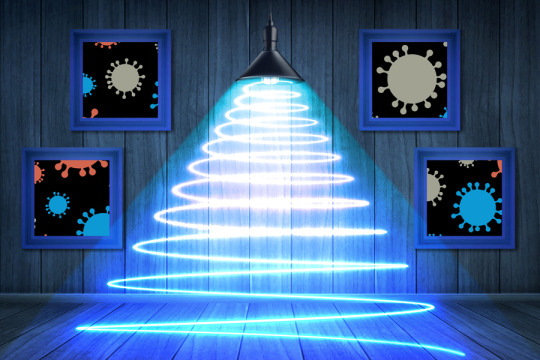
Many efforts to reduce transmission of diseases like Covid-19 and the flu have focused on measures such as masking and isolation, but another useful approach is reducing the load of airborne pathogens through filtration or germicidal ultraviolet light. Conventional UV sources can be harmful to eyes and skin, but newer sources that emit at a different wavelength, 222 nanometers, are considered safe.
However, new research from MIT shows that these UV lights can produce potentially harmful compounds in indoor spaces. While the researchers emphasize that this doesn’t mean the new UV lights should be avoided entirely, they do say the research suggests it is important that the lights have the right strength for a given indoor situation, and that they are used along with appropriate ventilation.
The findings are reported in the journal Environmental Science and Technology, in a paper by recent MIT postdoc Victoria Barber, doctoral student Matthew Goss, Professor Jesse Kroll, and six others at MIT, Aerodyne Research, and Harvard University.
While Kroll and his team usually work on issues of outdoor air pollution, during the pandemic they became increasingly interested in indoor air quality. Usually, little photochemical reactivity happens indoors, unlike outdoors, where the air is constantly exposed to sunlight. But with the use of devices to clean indoor air using chemical methods or UV light, “all of a sudden some of this oxidation is brought indoors,” triggering a potential cascade of reactions, Kroll says.
Initially, the UV light interacts with oxygen in the air to form ozone, which is itself a health risk. “But also, once you make ozone, there’s a possibility for all these other oxidation reactions,” Kroll says. For example, the UV can interact with the ozone to produce compounds called OH radicals, which are also powerful oxidizers.
Barber, who is now an assistant professor at the University of California at Los Angeles, adds, “If you have volatile organic compounds in the environment, which you do basically in all indoor environments, then these oxidants react with them and you make these oxidized volatile organic compounds, which in some cases turn out to be more harmful to human health than their unoxidized precursors.” The process also leads to the formation of secondary organic aerosols, she says. “Again, this stuff is harmful to breathe, so having it in your indoor environment is not ideal.”
The formation of such compounds is particularly problematic in the indoors, Kroll says, because people spend so much of their time there, and low ventilation rates can mean these compounds could accumulate to relatively high levels.
Having studied such processes in outdoor air for years, the team had the right equipment in hand to observe these pollution-forming processes indoors directly. They carried out a series of experiments, first exposing clean air to the UV lights inside a controlled container, then adding one organic compound at a time to see how they each affected the compounds that were produced. Although further research is needed to see how these findings apply to real indoor environments, the formation of secondary products was clear.
The devices that make use of the new UV wavelengths, called KrCl excimer lamps, are still relatively rare and expensive. They’re used in some hospital, restaurant, or commercial settings rather than in homes. But while they have sometimes been touted as a substitute for ventilation, especially in hard-to-ventilate older buildings, the new study suggests that’s not appropriate. “Our big finding was that these lights are not a replacement for ventilation, but rather a complement to it,” says Kroll, who is a professor of civil and environmental engineering, and of chemical engineering.
Some have proposed that with these devices, “maybe if you could just deactivate the viruses and bacteria indoors, you wouldn’t need to worry about ventilation as much. What we showed is that, unfortunately, that’s not necessarily the case, because when you have less ventilation, you get a buildup of these secondary products,” Kroll says.
He suggests a different approach: “There may be a sweet spot in which you’re getting the health benefits of the light, the deactivation of pathogens, but not too many of the disbenefits of the pollutant formation because you’re ventilating that out.”
The results so far are from precisely controlled lab experiments, with air contained in a Teflon bag for testing, Barber points out. “What we’re seeing in our bag is not necessarily directly comparable to what you would see in a real indoor environment,” she says, “but it does give a pretty good picture of what the chemistry is that can happen under radiation from these devices.”
Goss adds that “this work allowed us to validate a simple model that we could plug in parameters to that are more relevant to actual indoor spaces.” In the paper, they use this information “to try to apply the measurements we’ve taken to estimate what would happen in an actual indoor space.” The next step in the research will be to attempt follow-up studies taking measurements in real-world indoor spaces, he says.
“We’ve shown that these are a potential concern,” Kroll says. “But in order to understand what the full real-world implications are, we need to take measurements in real indoor environments.”
“These 222-nanometer radiation devices are being deployed in bathrooms, classrooms, and conference rooms without a full accounting of the potential benefits and/or harm associate with their operation,” says Dustin Poppendieck, a research scientist at the National Institute for Standards and Technology, who was not associated with this study. “This work lays the foundation for a proper quantification of potential negative health impacts of these devices. It is important this process is completed prior to relying on the technology to help prevent the next pandemic.”
The work was supported by the National Science Foundation, the Harvard Global Institute, and an NIEHS Toxicology Training Grant.
2 notes
·
View notes
Text
Conditions of the Ninth House
Ok I was just joking around that "It's a good thing the Ninth are the bone necros because they probably all have rickets being on Pluto" but then I wondered, would they?? how weak is their daylight?
Bunch of back of the envelope calculations and ruminations under the cut but the tl;dr is that brightest day Harrow would've experienced prior to Canaan House was darker than that of a typical grocery store interior
--
They aren't under a planetary atmosphere and I'm no physicist but I think light is light in a vacuum, some UV would reach that far just as some visible light does and due to them being partially a space station basically they are going to be under radiation we aren't.
Measurements for Solar radiation (W/m^2) on Earth are 1,413 at max and 1,321 at min. For Pluto due to its highly eccentric orbit it is much more extreme at 1.55 and 0.57. Compare this with Neptune which is 1.54 max and 1.47 min. Using the above and the value of 98,000 lux (a unit for brightness) for noon on Earth, I did some quick calculations that put noon on Pluto to vary between 114 lux to 42 lux (again due to its substantial orbital eccentricity). Putting that in comparable terms: average living room in Australia in 1998 was apparently 50 lux. Sunrise and sunset on Earth is ~400 lux. The dark limit of civil twilight (most can still read) is 3.4 lux. Night of fullmoon is 0.05-0.3 lux. Recommended office lighting is 320-500 lux.
With the above in mind, natural light reaching Drearburh at its brightest is comparable to a typical living room. And Pluto's rotation is 6.4 Earth days so the changes in natural lighting would be much more gradual than what Harrow would've experienced in Canaan house. It must have been quite the sensory overload + chaos for her!
Now for UV!
As far as UV goes, only Pluto readings I can find are in Rayleighs and I am too lazy to convert them [also yes I believe this is reflected off Pluto but it does not matter for our purposes as that is some of the light they'd be getting hit with] not many crafts have been to Pluto lol
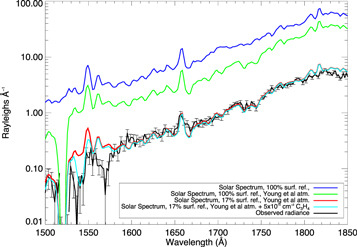
So I'm just gonna go off a common value based on distance that Pluto receives roughly 1/1600 of the light we do. Thus, its UV will be 1/1600 of the UV on the ISS (Drearburh is under artificial atmosphere but it is unclear what filtering it does in terms of UV so I'm mostly ignoring that). Earth 's atmosphere filters out basically all UV-C (germicidal really intense one) and about 90% or more of UV-B (the sunburn one).
Unfiltered sunlight composition is about 10% UV so 10% of those earlier solar radiation measurements of 1.55 and 0.57 W/m^2 is UV. This gives us the convenient calculation to 0.155 and 0.057 W/m^2 in the UV spectrum.
For some reason it was impossible for me to find simple measurements of UV in W/m^2 lol (everything was already adjusted to different units). BUT I was able to pull up a few studies that had those as raw data for entirely different thing and most helpful was one in Kuwait where UVB was 0.25 W/m^2 or this map where it is in mW/m^2 (so 200 = 0.2).
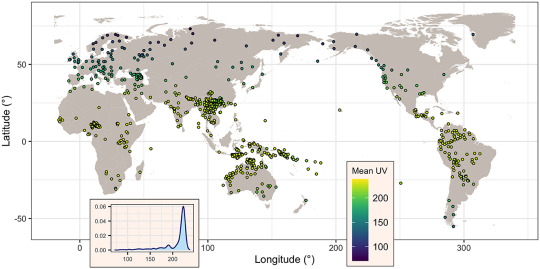
In terms of UV, this would put the Ninth House within the range of Southern England during its perihelion and to Scandinavia during its aphelion so yes it is in fact Rickets City.
perihelion = closest to sun; aphelion= furthest
It is likely the house makes use of UV-producing lamps for its population especially given the major malnutrition issues and that the founding population included at the very least some people of Maori descent, potentially other ethnic groups with often brown skin, and people with darker skin can be more susceptible to low Vit D in low UV environments since their melanin is blocking what precious little UV they are getting. John made many oversights e.g. he's able-bodied so the houses lack automated doors, but given his background I'd imagine he'd catch onto this at least. I believe there are mentions of arc lamps in the text and these can let off some UV so there's some textual support to this idea. However, I do imagine they still rely heavily on necromancy to heal rickets just as they do other conditions. [Also normally, I'd say "realistically" after 10k years they'd likely have lost a lot of their melanin responsivity as that has happened quite quickly in humans (Cheddar Man vs modern white brits or Ashkenazi Jews vs Mizrahi ones) but the Ninth House is a much more stable environment than European history LOL, like people are provided their food and there's no war at home, etc so the "use it or lose it" selection pressure isn't as relevant as it would be for cave animals. But also "realistically" doesn't matter anyways for a bunch of reasons and the Houses clearly engage in some genetic meddling anyway (Ianthe and Coronabeth's Alexandria's Genesis asses have violet eyes).]
Lastly, the height of no-one-else-gives-a-shit-Avery, but the low light also has major implications for their crop production. "Low light" houseplants [University of Melbourne] have lux within "270 to 807". The Ninth likely has to be using either additional lights for their snowleeks and/or they are channeling a lot of light into a mirror/reflector and beaming it over the growing area. The latter makes the most sense to me.. though given how dark it is they probably should've just GMO'd some lower water column algae
#TLT#TLT meta#dubious calculations#i wish i didnt hate drawing backgrounds bc i would love to design the snowleek fields LOL#the diet on the ninth is so bad#god i hope they are on b12 supplements
6 notes
·
View notes
Text
Found a picture of the stage setup with the UV lights

The contractor who set up the lights used bulbs that emit uv-c light, which is mostly used for sterilization
I did a quick search for the bulbs and almost every result mentions sterilization or germicide, I have to assume it's impossible to purchase these, (in bulk! enough to light a stage!) without knowing that they're for killing living organisms.
Link to an article about it
So... a bunch of NFT grifters threw a party in Hong Kong this weekend and reportedly a bunch of attendees are now at risk of permanent eyesight damage because the promoters used unsafe lighting, and people are going to the ER...
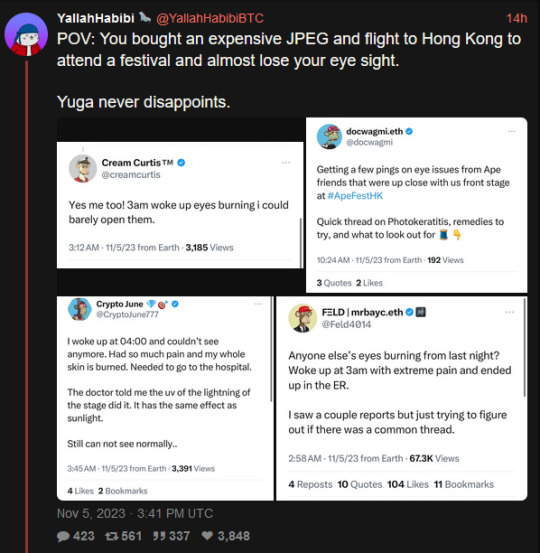

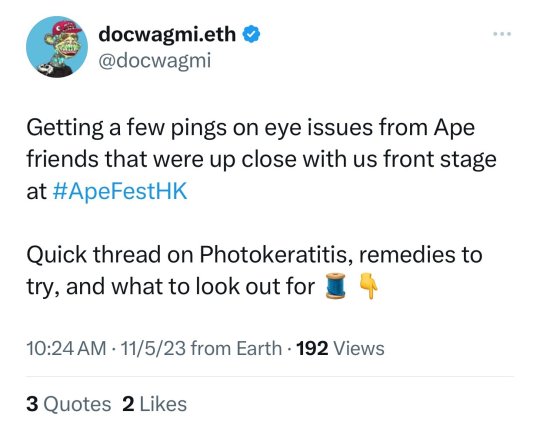


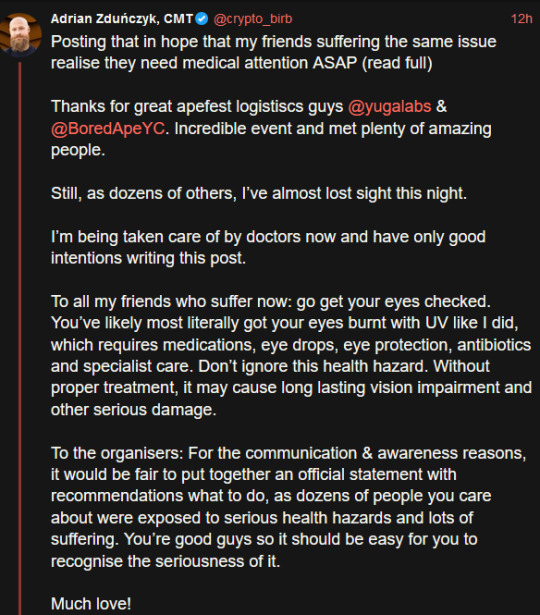
#also I'm going to guess that zero women were involved with the purchase approval and set up of the UV lights#maybe computer bros who stereotypically sit indoors all day by the computer don't know#but every woman who's ever been outside knows that UV light is the thing that causes sunburns#any woman could've provided the necessary Elle Woods moment and said 'UV light is the dangerous one#i know that because of my skincare regimen#so let's not point it at the audience'
30K notes
·
View notes
Text
Ozone Production and Destruction Using UV (Ultraviolet) Technology
Ozone Generation with UV Light
Ozone is one of the most powerful oxidizing agents available and is widely used in air purification and water treatment processes. While most commercial applications rely on ozone generators that use either air or oxygen as a feed gas via the corona discharge method, there are alternative technologies worth exploring.
One such alternative is the use of electrolytic ozone generators, which produce ozone directly from pure water, offering a chemical-free and efficient solution for specific applications.
Another method, though less common, involves the use of ultraviolet (UV) light. When UV light at a wavelength of 185 nm is passed through air or oxygen, it generates ozone. However, this method typically yields low ozone concentrations—around 0.5%—making it suitable primarily for air treatment. For water treatment, much higher ozone concentrations (typically above 6–8%) are required due to ozone's solubility limitations in water.
Ozone Destruction Using UV Technology
While ozone plays a crucial role in disinfection and oxidation processes, any residual ozone left in treated water can be harmful to both equipment and final products. This makes it essential to eliminate residual ozone before water enters downstream processes.
This is where UV destruction of ozone becomes valuable. UV light within the 240–280 nm range can effectively break down ozone molecules, offering a clean, chemical-free method of ozone removal. In particular, germicidal UV at 254 nm is capable of destroying ozone in water without leaving any byproducts.
To completely eliminate ozone concentrations up to 1000 ppb, a UV dosage of approximately 900 J/m² is typically required—considerably higher than the 300 J/m² dosage needed for standard disinfection.
Interestingly, UV-based ozone destruction also supports the generation of hydroxyl radicals (•OH), which are highly reactive but short-lived species. These radicals form through reactions such as:
O₃ + H₂O → O₂ + H₂O₂ (in the presence of UV light)
2 O₃ + H₂O₂ → 2 •OH + 3 O₂
This forms the basis of Advanced Oxidation Processes (AOP), which are used to enhance overall oxidation efficiency. AOPs are especially effective in reducing chemical oxygen demand (COD) by more than 75%, outperforming ozone alone in treating persistent organic contaminants.
Common Applications of UV-Ozone AOP Include:
COD reduction in industrial and municipal wastewater
TOC (Total Organic Carbon) reduction in process water
Removal of endocrine-disrupting compounds
BTX (Benzene, Toluene, Xylene) removal
Elimination of micropollutants from source water
0 notes
Text
Green Air Technology: Sustainable Purification Systems
Introduction
In an era of growing environmental concerns, green air technology has emerged as a revolutionary solution for sustainable air purification. As urbanization and industrialization contribute to increased air pollution, the demand for eco-friendly, efficient, and cost-effective air purification systems is on the rise. This article explores the various green air purification technologies, their benefits, and their role in fostering a healthier planet.
The Need for Sustainable Air Purification
Air pollution is a pressing global issue that affects millions of lives. Traditional air purification systems often rely on chemical treatments and high energy consumption, leading to environmental degradation. Sustainable purification systems offer an alternative by using natural, renewable, and energy-efficient methods to clean indoor and outdoor air.

Sustainable Purification Systems
Key Technologies in Green Air Purification
1. HEPA and Eco-Friendly Filters
High-Efficiency Particulate Air (HEPA) filters are widely used for removing fine particulate matter from indoor environments. Advanced filters made from biodegradable materials help reduce waste while maintaining high purification standards.
2. Activated Carbon Filtration
Derived from natural sources like coconut shells, activated carbon filters effectively remove harmful gases and odors without releasing toxic byproducts. These filters are widely used in air purifiers for sustainable indoor air quality improvement.
3. UV-C Light Purification
Ultraviolet germicidal irradiation (UVGI) technology uses UV-C light to neutralize airborne pathogens such as bacteria, viruses, and mold spores. Unlike chemical-based purification, UVGI is a clean and efficient method that minimizes environmental impact.
4. Photocatalytic Oxidation (PCO)
PCO technology utilizes titanium dioxide (TiO2) catalysts activated by light to break down harmful pollutants into harmless compounds like water and carbon dioxide. This process is energy-efficient and does not generate harmful residues.
5. Natural Air Purification Systems
Plants are nature’s air purifiers. Systems that integrate biofiltration with plant-based purification enhance indoor air quality while reducing carbon footprint. Living walls and green roofs are excellent examples of this technology.
6. Ionization and Plasma Technology
Advanced bipolar ionization and cold plasma technology work by releasing charged particles that neutralize pollutants. These systems are gaining popularity due to their ability to eliminate airborne contaminants without producing harmful ozone.

Challenges and Future Prospects
Benefits of Green Air Technology
Energy Efficiency: Many sustainable air purifiers consume minimal energy, reducing overall electricity costs.
Reduced Environmental Impact: Eco-friendly filters and natural purification methods minimize pollution and waste.
Improved Health Outcomes: Cleaner air leads to fewer respiratory illnesses, allergies, and infections.
Sustainability: Many green purification systems use renewable energy sources, reducing reliance on fossil fuels.
Challenges and Future Prospects
Despite its advantages, green air technology faces challenges such as high initial costs, limited public awareness, and technological adaptation barriers. However, advancements in AI-driven air purification, smart filtration systems, and renewable energy integration promise a cleaner and healthier future.
Conclusion
Green air technology represents the future of sustainable air purification. By investing in eco-friendly solutions, we can improve air quality while protecting our environment. As research and innovation continue, these systems will become more accessible, efficient, and vital in the fight against air pollution.
0 notes
Text
UV Water Purification in Fountains – How It Works
As the demand for clean, safe drinking water continues to rise, modern drinking water fountains are evolving to include advanced purification technologies. One of the most effective innovations in this field is UV (ultraviolet) water purification. This method ensures the water dispensed is not only clear and fresh but also free from harmful microorganisms. But how exactly does UV purification work in water fountains? Let’s break it down.
What Is UV Water Purification?
UV water purification is a chemical-free method that uses ultraviolet light to disinfect water. Specifically, it uses UV-C light, a short-wave type of ultraviolet radiation with germicidal properties. When water passes through a UV purification chamber, the UV-C light destroys the DNA of bacteria, viruses, and other pathogens, rendering them inactive and unable to reproduce.
This process effectively eliminates up to 99.99% of microorganisms, making it one of the safest and most reliable purification techniques available.
How UV Purification Is Integrated into Fountains
In UV-equipped drinking fountains, the purification system is typically placed at the point of dispensing—either inside the spout or within a small chamber that water flows through before it reaches the user.
The process includes several steps:
Water enters the fountain from the main supply line.
It passes through pre-filtration to remove large particles and sediments.
The water then flows through a UV chamber, where it is exposed to UV-C light.
Finally, the purified water is dispensed, ready for safe consumption.
This system operates instantly and continuously, ensuring that every drop of water is purified at the moment of use.
Key Benefits of UV Water Purification in Fountains
1. Chemical-Free Disinfection
Unlike chlorine-based purification systems, UV treatment does not rely on chemicals. This means there’s no change to the taste or odor of the water, making it ideal for drinking.
2. Effective Against Microorganisms
UV light is extremely effective in killing or neutralizing pathogens such as E. coli, Salmonella, Cryptosporidium, and Giardia, which are common causes of waterborne illnesses.

3. Low Maintenance
UV systems require minimal maintenance, typically involving only occasional replacement of the UV lamp and periodic cleaning of the chamber. This makes them cost-effective in the long run.
4. Environmentally Friendly
Because UV purification doesn't use chemicals or produce harmful byproducts, it’s considered eco-friendly and supports green building practices.
Safety and Monitoring Features
Modern UV water fountains often come with built-in safety features such as:
UV lamp indicators to notify users or maintenance teams when the lamp needs replacement.
Fail-safe systems that shut off the water flow if the UV system isn’t functioning properly.
Real-time monitoring to ensure consistent water quality.
These features ensure that the water remains safe at all times, giving users peace of mind with every sip.
Where UV Fountains Are Most Beneficial
UV-purified drinking fountains are especially useful in environments where water quality can’t be compromised, such as:
Schools and universities
Hospitals and healthcare facilities
Airports and transit stations
Public parks
Commercial office buildings
They are also ideal for locations with older plumbing systems or areas where water quality is inconsistent.
Conclusion
UV water purification is a powerful and efficient method of ensuring that drinking water fountains deliver clean, safe, and fresh-tasting water. By eliminating harmful microorganisms without chemicals or waste, this technology represents a smart investment in public health and sustainability. As more facilities upgrade their hydration stations, UV purification is quickly becoming a standard feature in modern water fountain design.
0 notes
Text
Key Quartz Glass Products
A. Quartz Tubes
Quartz tubes are cylindrical structures used in high-temperature and corrosive settings:
Semiconductor Industry: Serve as reaction chambers in diffusion furnaces for doping silicon wafers with boron or phosphorus.
Lighting: Core components of infrared heating lamp tubes (e.g., industrial drying systems) and ultraviolet germicidal lamp tubes (water/air purification).
Chemical Processing: Transport aggressive media like chlorine gas or sulfuric acid.
B. Quartz Plates
Flat, polished panels with applications in:
Optics: Windows for UV lithography machines and laser systems.
Solar Energy: Protective covers for photovoltaic panels, enhancing UV light utilization.
C. Quartz Rods
Cylindrical solid bars utilized for:
Laboratory Tools: Stirrers in high-temperature molten salt experiments.
Fiber Optics: Preforms drawn into low-loss optical fibers.
D. Quartz Crucibles
Containers designed for melting and crystallizing materials:
Solar Silicon Production: Hold molten polysilicon at 1,400°C to grow monocrystalline ingots.
Pharmaceuticals: Synthesize high-purity active ingredients without contamination.
E. Quartz Instruments
Custom-designed apparatus such as:
Spectrophotometer Cells: Enable UV-Vis spectroscopy in chemical analysis.
Thermocouple Protection Sheaths: Shield sensors in molten metal processing.

Quartz Ingots
F. Quartz Ingots
Raw material blocks for machining precision components:
Optical Lenses: Ground into lenses for deep-UV lithography systems.
Semiconductor Wafers: Sliced into substrates for MEMS (micro-electromechanical systems).
G. Quartz Crystal Singing Products
Artistic and functional devices leveraging quartz’s piezoelectric properties:
Resonators: Frequency control in watches, radios, and IoT devices.
Sonic Cleaners: Generate ultrasonic waves for industrial part degreasing.
H. Infrared Heating Lamp Tubes
Quartz tubes optimized for IR radiation:
Food Industry: Dry and sterilize packaging materials.
Automotive: Cure coatings on car bodies.
I. Ultraviolet Germicidal Lamp Tubes
Engineered to emit UV-C (254 nm) light:
Healthcare: Disinfect surgical instruments and hospital air.
Wastewater Treatment: Eliminate pathogens without chemicals.
0 notes
Text

Hire Sydney’s top cleaning specialists that offer environment-friendly hospitality cleaning solutions
Recent developments in technology have transformed the hospitality industry. Among these innovations, the industry has benefited tremendously from the latest innovations in hospitality cleaning solutions.
The convenience brought about by state-of-the-art technologies has made cleaning duties less labour-intensive. They have also improved workforce productivity and cost-saving measures for hospitality businesses.
The latest innovations in hospitality cleaning solutions have also been designed to contain environment-friendly chemicals by eliminating or reducing pollution and protecting biodiversity, in line with the global effort to achieve net zero emissions by 2050.
Choosing the right commercial cleaning service solutions is important for the hospitality industry as exposure to particular chemicals and toxins could potentially cause irreversible damage to employees, customers, and the surrounding ecosystem.
That said, here are the 6 latest innovations in hospitality cleaning solutions which have transformed the hospitality industry.
1. Green and sustainable cleaning products
Among the most popular developments in hospitality cleaning are eco-friendly cleaning products. They typically contain vinegar, baking soda, lemon, essential oils, water, and plant ingredients which are non-toxic, biodegradable, and not harmful to humans, animals, and nature.
Such cleaning chemicals are safe for both indoor and outdoor environments. For effective sanitisation, cleaners are recommended to use green products which have citric acid, peroxide, and lactic acid.
Cleaning products which are accredited by Good Environmental Choice Australia (GECA) typically fit this purpose. Green and sustainable cleaning chemicals should also contribute to a zero-landfill policy.
2. Ultraviolet(UV)-C disinfection
The disinfection method through UVC rays became more prominent during the wake of the COVID-19 pandemic. When applied to a cleaning machine, UVC cleaners use germicidal lights that combine with high-efficiency particulate air (HEPA) filters which trap 99.7% of particulate air which is 0.3% microns.
UVC rays are particularly effective in destroying the molecular bonds which support the DNA structure of bacteria and viruses. This includes preventing ‘superbugs’ that have developed a stronger than usual resistance to antibiotics from spreading.
UVC rays are also a chemical-free and environmental-friendly solution to fight off microorganisms from reproducing in any environment.
3. VCT floor cleaning technology
The floor of a premises which many people step on is bound to be subjected to tough wear, stains, and damage over time.
Even with thin coats of polymer or wax finish that gives off a glossy, reflective coating above the floor surface, the film could wear off with time.
Hence, applying vinyl composite flooring (VCT) is a long-lasting solution to ensuring that flooring is more durable, resilient, and helps restore the state of the flooring closer to its original condition.
4. Battery-powered equipment
Employees who are tasked with various housekeeping duties, including cleaning, can spend less time performing manual cleaning tasks, with the advent of battery-powered cleaning equipment. Some examples of battery-powered cleaning technology include cordless vacuums, floor scrubbers, and ride-on sweepers, that maximise the operating time, efficiency, and productivity of employees.
Battery-powered cleaning equipment are gaining popularity due to their advances in energy density that reduce weight and size, while simultaneously improving their durability. These battery-powered equipment are environment-friendly, reducing the need for fossil fuels and lowering overall greenhouse gas emissions.
The batteries used in these cleaning equipment may come in the form of solid-state batteries, or Gel or Lithium-ion.
5. Electrostatic sprayer disinfectant
When it comes to developing the safest and most efficient method for sanitising spaces, the electrostatic sprayer disinfectant hits the mark.
This disinfectant can be applied on almost any surface, takes up less time, and has better cleaning coverage than traditional cleaning methods. This spray electrostatically charges liquids, such as sanitisers and disinfectants, as it passes through the spray nozzle.
Charged droplets are generated which repel one another and actively seek out a surface. If applied correctly, these droplets have a higher success rate of coating all sides of a surface, even in hard-to-reach places that manual cleaners could miss.
6. Autonomous mobile robots (AMR)
With the emergence of IR 4.0 technology that is powered by artificial intelligence (AI), machine intelligence, and IoT, it’s no surprise that the hospitality industry has benefited extensively from the presence of AMR.
The high-performing, self-driven solutions have sensor detectors that avoid humans and pets, while carrying out cleaning decisions which reflect human input.
This especially helps reduce the workload required from a cleaning team, but also helps them to improve their productivity by focusing on other high-value tasks or cleaning duties. AMR can perform autonomous mopping, scrubbing, and vacuuming in a designated area.
Hire Sydney’s top cleaning specialists that offer environment-friendly hospitality cleaning solutions
With the recent advancements in hospitality cleaning solutions, it is now possible for the hospitality industry workforce to focus more on productive tasks. Hospitality-related businesses can improve their cost-saving measures, maximise returns, and contribute to a healthier environment.
Schedule a consultation with Sydney’s top commercial and strata cleaning in Sydney specialists to have your hospitality cleaning needs taken care of and met with the highest standards.
#Strata cleaning in Sydney#Commercial Cleaning in Sydney#Strata Building Management#building management#Facility Management Services#Strata Cleaning Services#Cleaning Services Sydney
0 notes
Text
Manitowoc K00454SUBWAY Gen 2 Luminice Subway Bulb | PartsFe

The Manitowoc K00454SUBWAY Gen 2 Luminice Subway Bulb is a specialized ultraviolet (UV) light bulb designed for use in Manitowoc ice machines equipped with the LuminIce II Growth Inhibitor system, often found in Subway restaurant ice machines. This bulb emits UV-C light, a specific wavelength of ultraviolet radiation known for its germicidal properties.
To keep your restaurant running smoothly, it's crucial to invest in Manitowoc Luminice Subway Bulb that ensure long-lasting performance.
#manitowoc#k00454subway#bulbluminicesubway#manitowocparts#partsfe#partsfebuzz#restaurantowner#restaurantequipmentparts#kitchenequipmentparts#foodserviceparts#ovenparts#icemachineparts#dishwasherparts#griddleparts
0 notes
Text

Germicidal UV-C Light for Central Ducted Indoor Units in Centralacwarehouse.com
Get Germicidal UV-C Light 24 Volt for Central Ducted Indoor Units.
Benefits:
Improves Indoor Air Quality
Continuous Germicidal Disinfection
Extends life of AC Unit
Reduces HVAC system maintenance
Provides a healthier living environment for homes and businesses
Sterilizes biological growth, bacteria, and viruses
PRICE: $129.99 ex. tax
hvac sizing calculator,2.5 ton ac unit square footage,what size air conditioner do i need for 2,500 sq ft house,what size air conditioner do i need for 2,000 sq ft house,3-ton ac unit square footage,2 ton ac unit,what size ac unit for 2,400 square feet
LINK: https://www.centralacwarehouse.com/category/gresham-city-central-air-conditioner-heat-pump-gas-furnace-package-unit-supplier
2 notes
·
View notes